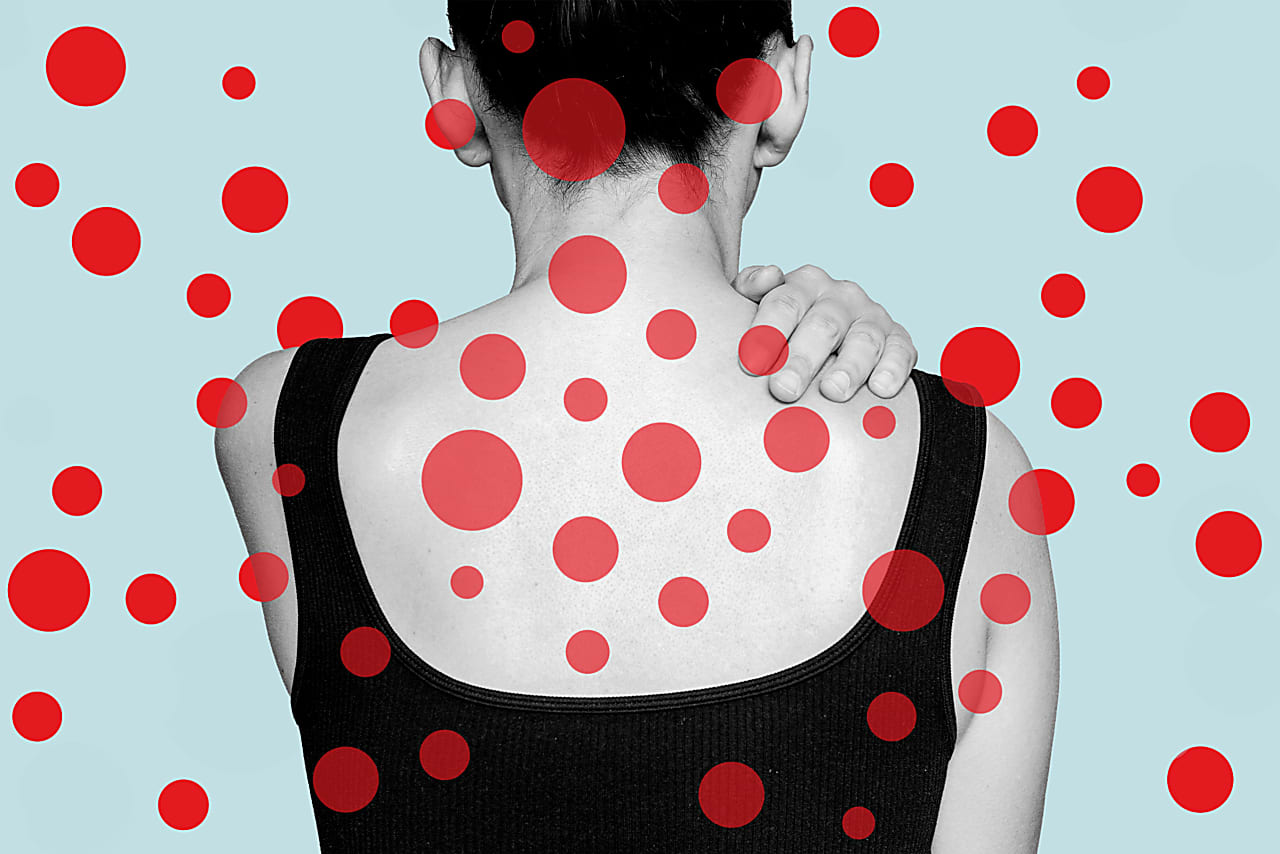
YOU CAN GET SHINGLES UNDER 50. HERE’S WHEN TO WORRY.
A few friends and colleagues have come down with shingles recently. All of them were under the age of 50.
Shingles, also called herpes zoster, is a viral infection caused by the reactivation of the virus that also causes chickenpox. The virus remains dormant in the body of anyone who’s ever had chickenpox, and can reactivate at any time.
Most of us think shingles is an old person’s disease and don’t even think about it until our 60s or 70s, especially since the vaccine was long recommended for people aged 60 and over. But the reality is, it can strike at any time, triggered by stress—physical or psychological—and it is often very painful. The good news is it’s often milder at younger ages.
Starting in 1998, shingles rates increased across all ages for nearly two decades, including for those in their 40s, according to Centers for Disease Control and Prevention data. Rates have stabilized somewhat recently but remain higher than the 1990s.
A 2016 study in the journal Clinical Infectious Diseases found a more than fourfold increase among all age groups over the last six decades in the U.S.
It’s unclear why shingles rates have increased. Some doctors theorize it could be related to the chickenpox vaccine, which children started receiving after it was introduced in the U.S. in 1995. With less of the virus that causes chickenpox circulating in the general population, people weren’t exposed to it as much and were no longer receiving a natural boost in immunity.
“Since we have essentially eliminated chickenpox, these restimulations of our immune system are no longer there,” says Dr. William Schaffner, a professor of infectious diseases at Vanderbilt University Medical Center.
Doctors who disagree say the increases began before the chickenpox vaccine started to be commonly used.
Some of the increase could be due to more people taking medications that may suppress their immune system, such as drugs for autoimmune diseases or steroids for rashes or other conditions.
The Surprise
Jeffrey Escobar, a 47-year-old New York City attorney, thought the pain that started in his right arm a few weeks ago was from working out with his physical trainer. He put some lidocaine patches on it and then noticed a rash developing.
When it didn’t go away with steroid cream, he went to the doctor, who immediately recognized it as shingles.
“He gave me an antiviral,” he says. “Now I’m just kind of dealing with a lot of sensitivity on the right side of my body and pain every so often.”
Escobar says his case was mild but it still surprised him. His dad had shingles when he was older but he has cousins who are also under 50 who have also recently had shingles.
“It’s curious to me why three of us in our family have already developed shingles,” he says.
Dr. Donald Dumford, an infectious-disease doctor at Cleveland Clinic, says people under 50 are about one-half to one-third less likely to get shingles. The risk goes up substantially once you’re over 70, he says.
According to the most recent CDC data, from 2019, about four per 1,000 people under 50 get shingles every year. That number rises to eight per 1,000 in people age 60 and older and 10 per 1,000 in people over 70.
“Over a lifetime, one out of every three people will get shingles,” he says.
The shingles data is helpful but incomplete because it isn’t a disease that doctors are required to report to local or federal health authorities and the CDC data only goes through 2019 so it’s unclear how or if rates have changed since the Covid-19 pandemic.
Dumford says the trigger is typically physiological stress, whether it’s recovering from another illness, like Covid, or a bacterial infection. Emotional and social stress can also be a trigger.
“If the body is busy ramping up the immune system for something else, that’s a chance for the zoster virus to sprout,” he says.
While shingles isn’t a fatal illness and doesn’t often result in severe complications, Dumford says it can cause encephalitis in very rare instances.
Some doctors theorize that Covid-19 infections may be triggering changes in the immune system that make people more likely to develop shingles. There is evidence that Covid-19 resulted in more reactivation of the Epstein-Barr virus, which remains dormant after a mononucleosis infection.
Doctors say more research needs to be done to see if that’s the case for herpes zoster. A 2024 meta-analysis in the Journal of Medical Virology reviewed multiple studies and found that people with Covid-19 had a 2.16-fold increased risk of herpes zoster compared with people without Covid.
The Treatment
The CDC doesn’t advise getting the shingles vaccine until you’re 50 or older, at which time people typically have no out-of-pocket cost.
Typically younger people experience milder cases of shingles and are less likely to develop postherpetic neuralgia, or neuropathic pain in the area where you had shingles, which can last months.
But people under 50 who are immunocompromised are more at risk of developing shingles, and the CDC recommends vaccination for those people, provided they are age 18 or over.
It’s unclear how long the shingles vaccine protects against infection. Doctors say it seems to offer good protection for at least up to a decade. Currently the CDC doesn’t recommend getting a booster after the initial two-shot regimen.
Dr. Kenneth Schmader, a professor of medicine at Duke University School of Medicine and shingles specialist, says he gets asked a lot from younger people if they should get the shingles vaccine. He tells them it isn’t recommended or necessary unless they are immunocompromised.
“If you get it at age 35, is it going to protect you when you’re 70? Probably not,” he says. “You want to get it when the risk is higher, not lower.”
Write to Sumathi Reddy at [email protected]
2024-08-29T15:07:57Z dg43tfdfdgfd